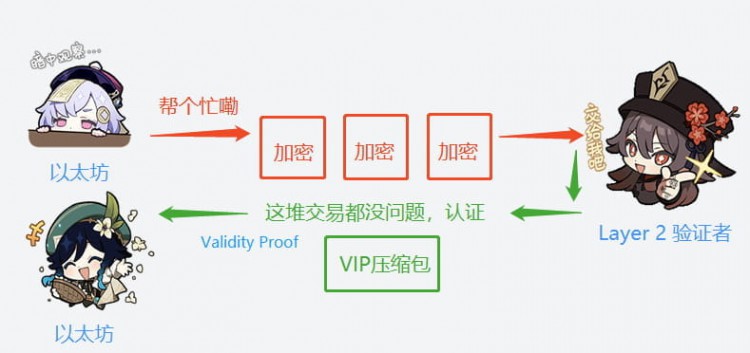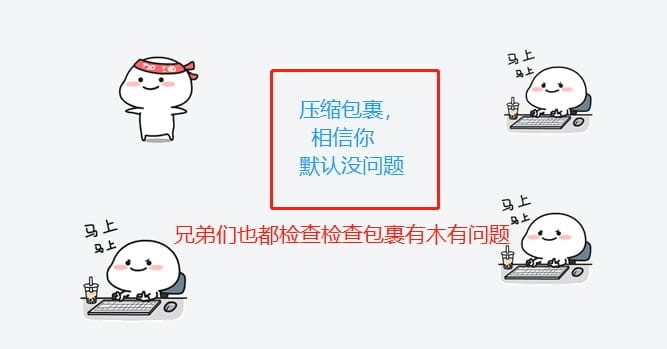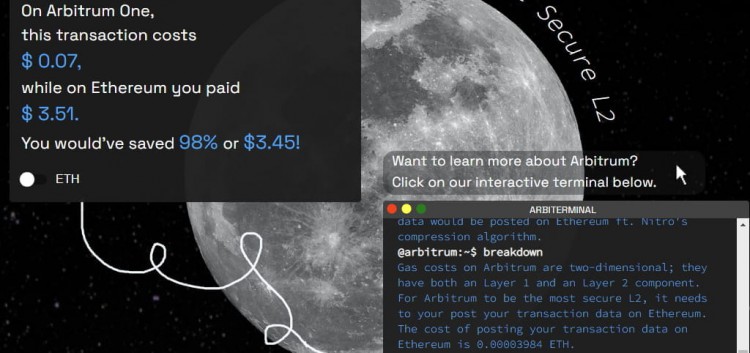Author: ST, Nasida
Due to the recent popularity of ZKS and Stark again, more and more friends are asking about it. In fact, I wrote a popular science article in early 2023. This special version updates the latest trends.
In the Ethereum network, in the past, due to the bandwidth of the ETH network, gas fees often increased significantly when network transactions were more congested. This makes the cost of a transaction very high, sometimes even reaching tens or hundreds of dollars per transaction, and the speed is very slow.
With the rise of Layer 2, the transaction speed of ETH has accelerated, but the cost is still very high sometimes.
This is similar to the difference between when we eat on weekdays and when queuing up at tourist attractions on holidays and when the price increases (a loaf of bread usually costs 5 yuan, but it will cost you 50 during peak tourist season); or when passing through a toll station at a highway intersection on weekdays and on holidays.

Every transaction in Ethereum contains data, and each data consumes gas. Since the Ethereum network sets an upper limit on the amount of data in each block, as well as an upper limit on TPS. So, how can we improve Ethereum’s capacity, speed, and TPS without transferring all content data to offchain? Rollup came out in response
The role of Rollup is to copy the content that Ethereum needs to calculate and send it to the Layer 2 protocol connected outside Ethereum for calculation. Then, the result information is compressed, packaged, ready for dispatch, and sent back to the on-chain network.
There is a large amount of signature confirmation information in the compressed block. Originally, each transaction on the chain could only have one confirmation signature in a block, but now this block is equivalent to a VIP signature block that compresses many transaction signatures. Passing one VIP is equivalent to passing 100 VIPs. This indirectly significantly increases the TPS of ETH.

This is similar to how everyone has a question, but attending meetings one by one to present their presentations is time-consuming and laborious. It uses elected and trusted representatives to summarize and review everyone's problems and deal with them centrally, thus greatly improving efficiency. 1 represents that the question has been answered, which equals 100 questions.
Part of the data on the chain remains unchanged. Therefore, the reliability of the representative figure in the middle (Rollup Layer 2 protocol) also determines the security of Ethereum. Different models of Rollup also produce different styles, advantages and disadvantages.
Therefore, here is a quick explanation for a few representatives on the shallow differences between ZK Rollups and Optimistic:
ZK Rollups, ZKSnark or Zero Knowledge Rollups, as the name suggests, performs Rollups through zero-knowledge proof verification. Zero-knowledge proof is also one of the main contributions to cryptography by Silvio Micali, the founder of the blockchain public chain project Algorand.
The four major characteristics of ZK (note that it is ZK, not JK):
1. Zero Knowledge: Verifiers do not need to see all transaction data
2. Succinct: concise and concise
3. Non-Interactive: No need to know who the verifier is
4. Argument of Knowledge: Prove the authenticity and correctness of the transaction

Therefore, the core method of Zk Rollups is to certify the authenticity of different data (Validity Proof) through rigorous and complex verification algorithms and the verifier (ZkSnarker/Validator) in the Layer 2 protocol, thereby packaging the certification results. After the Ethereum network eliminates redundant work information, it can directly absorb data blocks containing a large amount of compressed signature information into the network.
Anyone can participate in network certification and become a certifier. Therefore, in essence, ZKSnark is also a Layer 2 protocol of the PoW consensus mechanism.
【advantage】:
1. Layer 2 is verified by Ethereum very quickly, and the assets stored in Layer 2 can be quickly withdrawn back to Layer 1 Ethereum.
2. Very suitable for applications in Payment, banks, exchanges and other businesses that require fast settlement
In 2024, the number of the ZK Rollups representative project ZKSync ecosystem has increased several times compared to the past year. The stability and fluency of the overall network have been greatly improved. The corresponding dex and cross-chain integration are also of greater quality than a year ago. promote. The upcoming Starknet also belongs to the ZK-Rollup series, but has some unique evm compatibility
[Disadvantages]: Because the algorithm is relatively complex, there is a certain threshold for application development.
But if a more Dapp-friendly model can be developed based on algorithms in the future, ZK will still be the most valuable method for long-term expansion.
The Optimistic method is as its name implies: optimistic and begins to believe that all transactions sent are trustworthy and authenticated.
Layer 2 verifiers need to pledge Tokens as a deposit first. If someone else discovers a problematic package during the verification process, the verifier (Sequencer) will be fined part of the Tokens and give them as a reward to the person who discovered the problem.
After each data is packaged, there will be a verification period for other verifiers to check whether there are any problems and whether it needs to be returned to the package again.

Optimistic Rollups also have smart contract functions and can have corresponding governance tokens.
The essential difference between the Op Rollups and ZK Rollups methods is that everyone in ZK can participate in the certification through PoW certification, while OP prefers to select a group of trustworthy certifiers to supervise the entire packaging transaction process.
【advantage】:
1. Suitable for developing Dapp, it can almost seamlessly migrate projects originally in Layer 1, and is also developing the corresponding OVM virtual machine.
【shortcoming】:
1. The speed of withdrawing coins from Layer 2 to Layer 1 is slow, usually taking more than 1 week (because the verifier needs to verify the authenticity of the package), but there are currently optimized supplementary protocols to help speed up this model.
2. There is a risk cost for validators to do evil.
The OP Token we often use to talk about, Optimism is one of the Layer 2 protocols that utilizes the Optimistic method, and Arbitrum is also a Layer 2 protocol developed using the Optimistic Rollups model. Since the method names of the Optimism project and Optimistic Rollup are very similar, it is easy to get confused.
First of all, as mentioned earlier, Arbitrum is essentially a Layer 2 protocol project that utilizes the Optimistic Rollup model. Often used to compare with the Opitmisim project, the current TVL at the Layer 2 level is among the highest among many protocols. When the OP project performs certification, it only performs one round of fraud proof, and the transaction calculation of Layer 2 relies on Layer 1 for execution.
Arbitrum conducts multiple rounds of fraud proofs during verification. At the same time, Aribitrum's transactions are not executed on Layer 1, and it has its own virtual machine, which is more compatible with the ETH network.

After a year of development, the ecology on OP and Arb has also experienced a wave of highlight moments. The ETH-based L2 and Sidechain public chains (AVAX, Matic, Ronin, etc.) have also greatly increased the diversity of the Ethereum ecology.
And restaking projects like Altcoin about rollups have also begun to appear, adding different gameplay methods.
This article tries to use relaxed examples to explain several hot concepts that confuse many friends around me, including the author himself who has been troubled by various OP and ZK series projects and methodologies. After thinking and explaining with examples, I hope that everyone can have a clearer concept. If you are interested in technical aspects, you can also consult the engineers who developed the corresponding protocols. In order to preserve some brain cells, this article will not elaborate on the technical details. Finally, let’s sort it out:
● Rollup refers to a sorting method that sends a bunch of transaction tasks to the Layer2 protocol to work, thereby improving the operating efficiency of Ethereum.
● Zk Rollups refers to a Layer 2 method that uses zero-knowledge proof cryptography algorithms to complete outsourcing work without knowing who the verifier is.
● Optimistic Rollups refers to a Layer 2 method that uses a bunch of verifiers to supervise and discover whether there are bugs through a reward and punishment mechanism when the default packaging is good.
● Optimism and Arbitrum are both projects developed based on the Optimisctic Rollups method.
●Zksync, ZKxxxxxxxMany ZK projects, including Starknet, Base, Linea, and Scroll, are developed based on the ZK Rollups method.
The current ZK Rollups are more suitable for Payment and other businesses that require fast transactions. The algorithm is slightly complex, but it will be much better in 2024. It is currently the hottest L2 solution, while the Optimistic method is more suitable for Dapp development and Defi business, which is to withdraw coins. It's a bit long.
Other Layer 2 protocols, Linea, and the most popular L2 protocol after ZKS, Polygon ZKevm, are all exploring the optimal solution for Ethereum's expansion.
Note: This article is for popular science purposes and does not provide investment advice. Please make rational judgments. When reprinting the article, please indicate the source of the author.
$斯塔克 $ARB $ETH $OP
